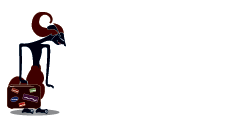Flora and Fauna
Biodiversity in Indonesia is well seen on its rich and unique ecosystems. Indonesia, the world’s largest archipelago, consisting more than 17,508 islands stretching 5,000 km (3,200 miles) from Sabang (northern tip of Sumatra) to Merauke (Papua), is divided into three main geological groups:
- The Sunda Islands:
- The Greater Sunda Islands are composed of Sumatra, Java, Kalimantan and Sulawesi.
- The Lesser Sunda Islands are composed of a chain of smaller islands east of Java, from Bali to Lombok, Sumbawa, Sumba, Flores and Timor. Known as Nusa Tenggara, they are divided into West Nusa Tenggara, composed of Bali and Lombok, and East Nusa Tenggara, stretching from Sumbawa to Timor.
- The Moluccas or the Maluku islands
- The Western New Guinea and Aru Islands
These geological groups have its own distinct flora and fauna in accordance to the Wallace Line, named after the British naturalist Alfred Wallace in his voyage through the Malay Archipelago. The Wallace Line divides Indonesia into two distinct flora and fauna zones, a western, Asian ecological zone and an eastern, Australian zone.
The Greater Sunda Islands, including Bali, are closely related to the Asian ecological zone. Once linked to the Asian mainland, this zone offers large Asian animals, such as elephants, tigers, rhinoceroses, orangutan and the dense tropical rainforests of Asia. Mainly found in Sumatra, here you will be able to find the world’s largest flower, “Raffflesia arnoldii”, named after Sir Thomas Stamford Raffles, the founder of Singapore. Its diameter can reach up to a meter and can weigh up to 10 kg.
Visiting this zone, Sumatra and Kalimantan, will provide you with a chance to see the “Orangutan” (man of the forest). The two “Orangutan” rehabilitation centers in Bohorok, North Sumatra and Tanjung Putting National Park, Central Kalimantan, present the opportunity to see these primates in their natural settings.
Contrary to the lush tropical rainforest and big animals of the western Wallace Line, Australian zone of Western New Guinea, Aru Islands, the Maluku islands, Lesser Sunda and Sulawesi have distinctive flora and fauna. Western New Guinea and Aru islands were once part of the Australian mainland and are the only places in Indonesia to have marsupial mice, kangaroos and Australian reptiles. Western New Guinea is a Garden of Eden for bird watching enthusiast. With more than 600 species of bird, especially the famous cassowary, you are guaranteed to fulfill your bird watching passion.
The Maluku islands, Lesser Sunda and Sulawesi have long been isolated between the two landmasses. Perhaps the Babi Rusa and Anoa, native species of Indonesia, are the two most distinctive animals that you would see in Sulawesi.
If it’s diversity in flora and fauna that you seek, Indonesia offers unlimited excitement. You will feel amazed to see what you can experience in just this one magnificent country, Indonesia.
Popularity: unranked

